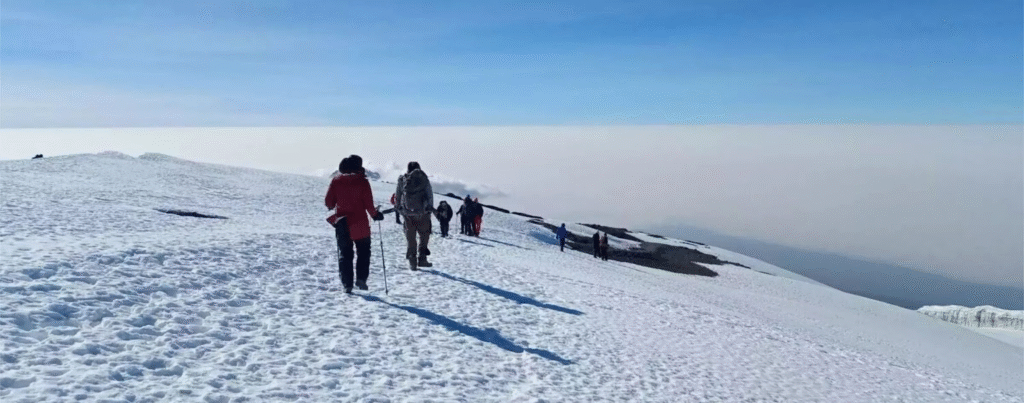Climbing Kilimanjaro in the Age of Tech: How Smart Gear and Data Are Redefining Adventure
The world’s tallest freestanding mountain has been climbed for over a century. But Mount Kilimanjaro, rising 5,895 metres above the Tanzanian plains, is being experienced today in ways its earliest explorers could never have imagined.
To climb Kilimanjaro used to mean a compass, a guide, and determination. Today, it’s also about GPS precision, environmental sensors, solar chargers, and data-driven preparation. Technology has not made the challenge easier — it has made it smarter, safer, and far more connected.
Data Meets Endurance
Modern climbers approach Kilimanjaro like engineers of their own success. Altitude sickness is no longer a mystery; it’s monitored. Wearable devices like the Coros Vertix 2S, Garmin Fenix 7, and Apple Watch Ultra now track elevation gain, blood oxygen saturation, heart rate variability, and even body temperature.
Each reading tells a story. A drop in SpO₂ signals that the body needs to slow down. A heart rate recovery delay means rest is overdue. Climbers and guides can use this real-time data to optimise pacing and prevent dangerous altitude complications.
Even recovery is tech-assisted: sleep quality is tracked nightly, hydration reminders keep fatigue at bay, and nutrition timing apps ensure the body stays fuelled during long climbs.
This synergy of human endurance and digital precision means fewer risks, smoother acclimatisation, and a better chance of reaching the top.
How Long Does It Take?
Technology can’t change the laws of physiology. The climb still demands patience. Most people ask how long does it take to climb Kilimanjaro, and the answer — seven to nine days — remains optimal.
The data confirms it. Faster ascents show a sharp increase in AMS (acute mountain sickness) symptoms. The best results come from steady climbs where altitude gain is limited to 300–500 metres per day above 3,000 metres.
In short: even in an era of real-time data and smart analytics, the best route remains the oldest rule — slow is strong.
Mapping the Smart Way Up
Team Kilimanjaro’s TK Lemosho Route is now the tech-climber’s favourite. It’s quieter, longer, and allows for better altitude adaptation — perfect for testing the synergy between physical endurance and precision tech.
Unlike crowded routes such as Machame and Umbwe, which waste energy on an unnecessary 401-metre climb immediately lost into Karanga Valley, TK Lemosho’s profile is smooth, efficient, and measurable. Climbers using smart watches can visualise the gradient in real time, tracking performance against elevation gain and oxygen saturation to fine-tune pacing.

For the truly data-obsessed, the Excel Extension — a night spent inside the crater at 5,729 metres — offers one of the rarest datasets in adventure sports: sustained physiological readings in near-arctic equatorial conditions. It’s not just a feat of endurance; it’s an experiment in human adaptation.
Tech in the Field
From a technology standpoint, Kilimanjaro has become a live lab for innovation. Solar energy systems power camp lighting and communications. Drones capture route mapping and terrain assessment. Even rescue operations benefit from satellite connectivity through Garmin InReach and Starlink.
Guides equipped with handheld GPS units and altitude monitors can now anticipate weather shifts and health risks with far greater accuracy. For Team Kilimanjaro, technology doesn’t replace experience — it enhances it. Their approach combines deep local expertise with 21st-century precision, creating a model of augmented guiding that blends human judgment and digital tools.
When to Go: Reading the Data
The best time to climb Kilimanjaro hasn’t changed — dry seasons, from January to March and June to October, remain optimal. But satellite forecasting and digital climate models now give climbers better planning accuracy than ever before.
Using predictive weather analytics, teams can select ascent windows with ideal summit conditions — wind speeds under 15 km/h, daytime temperatures around 15°C at 3,000 metres, and low overnight freeze risk above 4,500 metres.
That said, some tech-driven adventurers intentionally choose the “off-grid” months — April, May, and November — to test gear and endurance in unpredictable conditions. It’s the difference between using data and defying it.
Comfort and Connectivity
Even at 4,000 metres, the modern climber is not completely disconnected. Team Kilimanjaro’s seven “support series” reflect the full spectrum of tech-enabled experience.
Roughly 70 percent of climbers choose the Advantage Series, which balances comfort and adventure — reliable power banks for charging devices, fresh food, private toilets, and warm, structured camps. The Superlite Series caters to purists who prefer total minimalism, stripping away devices for full immersion. At the high end, the Hemingway Series offers near-VIP conditions — including high-efficiency solar setups, communication hubs, and private logistical coordination.
It’s adventure customisable to your bandwidth.
The Data of the Summit
Summit night remains unchanged in spirit, if not in metrics. Climbers wake at midnight, their heart rates spiking as temperature drops below freezing. Devices flash data streams: elevation, pulse, blood oxygen, ascent rate.
And yet, even with all that precision, the moment of arrival defies measurement. When the sun crests over the horizon and illuminates the glaciers of Uhuru Peak, there are no numbers that describe it. The air is too thin, the emotion too vast. Technology records the climb, but it cannot quantify the feeling of having reached the top.

After the Climb
Post-climb, the data becomes story. Smart watches upload GPX files that overlay routes onto 3D terrain models in apps like Relive, Google Earth, and Garmin Connect. Climbers can replay their ascent, visualise their heart rate at different elevations, and share the journey with family and friends in immersive formats.
Many say it’s not just about memory — it’s about reflection. Seeing the climb visualised in data brings a new appreciation of what the human body can do.
The Future of the Climb
To Kilimanjaro veterans, the mountain hasn’t changed — but how we interact with it has. Tech now bridges adventure and analysis, making the experience not only safer but richer.
Yet the paradox remains: no matter how advanced the tools become, the mountain demands the same things it always has — patience, courage, and respect.
Data can measure your ascent, but only endurance gets you to the summit.
Keep an eye for more latest news & updates on Techsslash!






